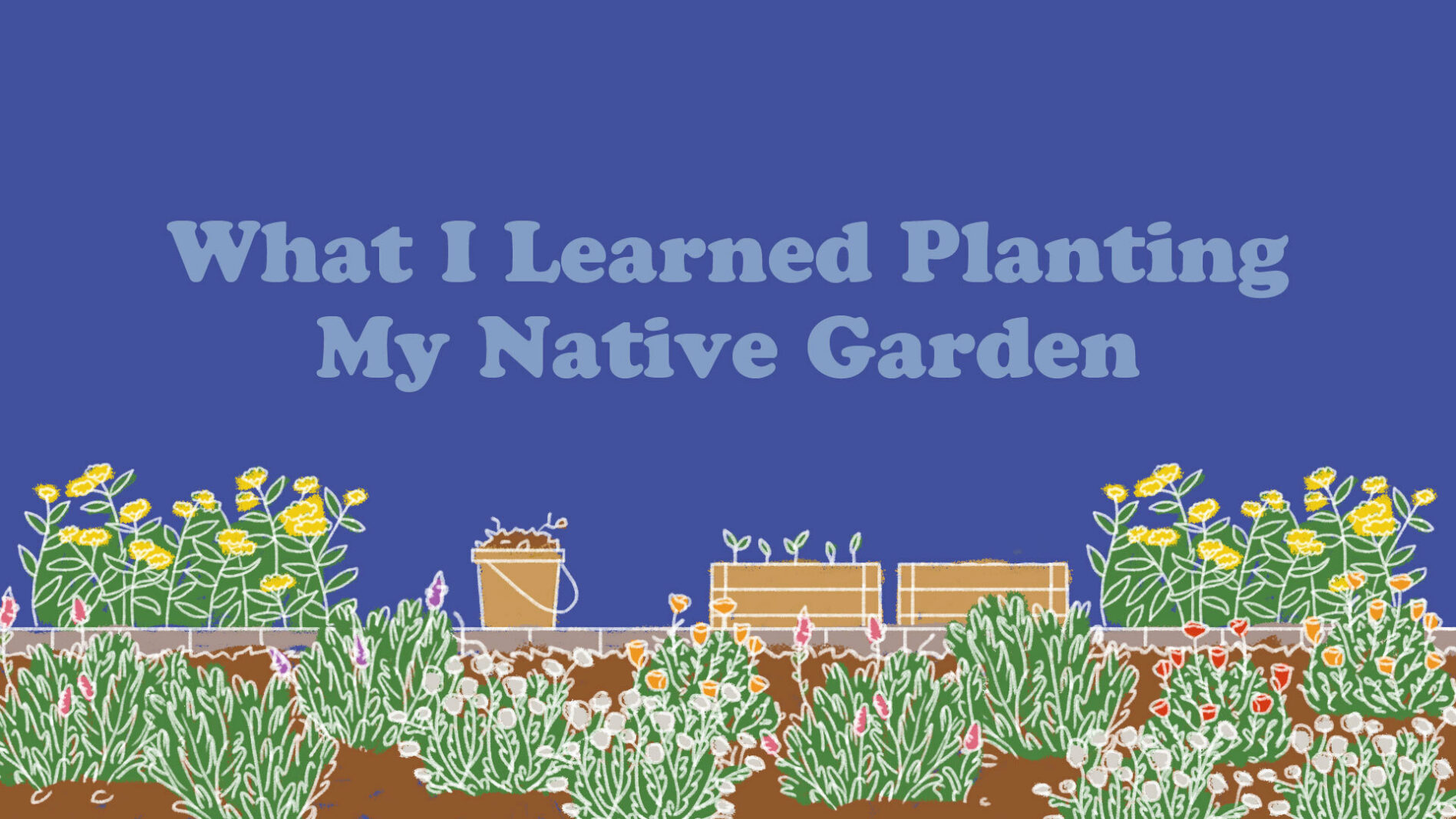Are you thinking of replacing your lawn with a native garden? Turning your yard into a native landscape can be a powerful tool in protecting local habitat, saving you money on your water bill and lowering your carbon footprint. It can seem like a daunting challenge: where do you start, how hard is it to do, what if something goes wrong? Don’t fret! My name is Eric Wilson and I work as a program manager for the TreePeople Land Trust. I kicked my turf to the curb earlier this year, replacing it with Southern California natives. It was such a great learning experience. I want to share with you my ups and downs so you can be prepared when you say goodbye to your lawn.
Takeaway #1: Make a plan
I made a plan and was committed to it. I researched everything I needed to get the job done, local vendors where I could rent equipment, and how much time I would need. I rented a sod cutter to remove my 680 square feet of lawn. A few months earlier I removed about 80 square feet of turf with a pick mattock and vowed to find a more efficient way to pull up the rest of my yard. I didn’t love the idea of a gas powered device, which also required me to rent a truck, but it made the work quicker.
Takeaway #2: Convenience Vs Efficiency
A sod cutter removes long strips of sod that can be rolled up for disposal. I composted the old lawn through my city’s municipal green waste program. However, more soil than I anticipated ended up in the green bin. Using the pick mattock would have enabled me to save more soil and generate less waste. I undertook the work with a friend and could have saved money by purchasing (or renting) a second pick mattock for my buddy.
Takeaway #3: Expect Surprises
The last major takeaway from this whole experience related to the irrigation system. I flagged the sprinkler system and called 811 ahead of time so all utility lines were identified. Regardless, I still managed to run over one sprinkler head and some unknown part of what I assume is a cleanout from my plumbing. Using the sod cutter, set to a depth of 2” to try and remove all traces of the grass, I ran over a flap buried beneath the lawn that covered what looked like an exhaust or outlet pipe of some sort.
At the end of the day, the biggest thing I learned is that every person’s goals are unique and sometimes the quickest option isn’t always the best. If I could do it all over again, I would have taken more time to plan, do the work, and allow myself to use a hand tool. This would have let me better level the land to also make a rain garden. This was especially true since shortly after installing my native garden (with 4-6” of mulch coverage and a decomposed granite path) we received a foot and a half of rain in about 6 weeks. I was so glad to have planted my garden and removed my lawn prior to the deluge, but I really wish I had shaped the land and had been able to maximize all that rain.
If you’re ready to take out your lawn in favor of a California native garden, let TreePeople take the guesswork out of finding the right plants for you and your yard. Our Native Garden Kits are a quick and easy way to bring California native plants to your property. We work directly with growers to help you turn your yard into a climate adapted, water saving slice, pollinator loving slice of native habitat. That’s not all! We also include a design plan to help you get started and build the native garden of your dreams. To learn more, visit www.treepeople.org/yards.

